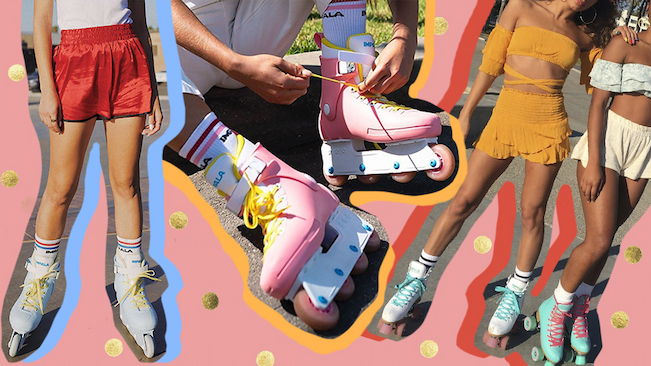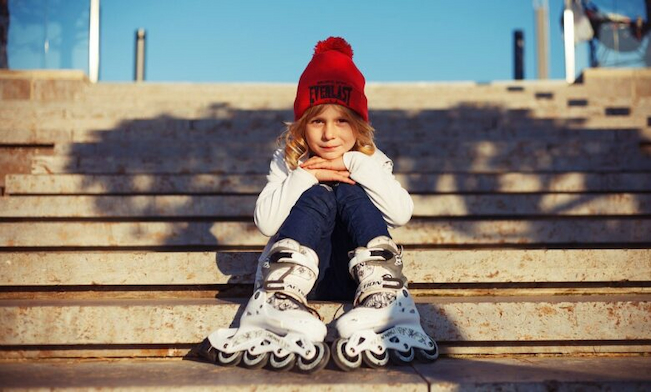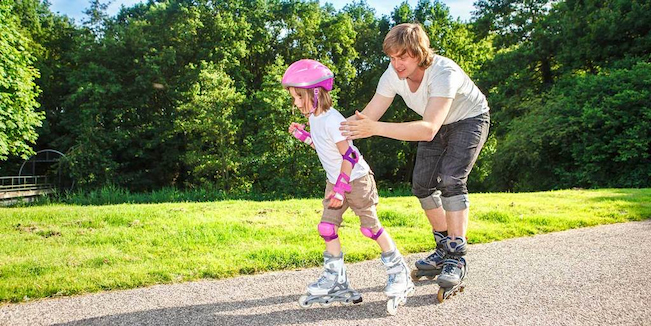Roller skating is one of the most fun, liberating and physically engaging activities. Kids love it, adults love it, and if you’re a parent of a child who shows interest in it, don’t hesitate to introduce them to the world of roller skating. Although your kid will probably want roller skates because other kids have a pair and they seem cool and interesting, even if they don’t, getting them a pair of roller skates is a smart thing because it is a wonderful way to build up their muscles. And we don’t mean only leg muscles, but muscles on the entire body.
Also, your child will improve their balance, and learn how to manage to move around with wheels on their feet. Besides the physical part, roller skating is a perfect cardio exercise that doesn’t appear like an exercise. It helps your kid stay active outdoors. Also, it’s great for socialising with other kids.
If you’re looking for boys or girls adjustable roller skates, you could be surprised by the abundant options in stores. They are colourful, their wheels differ, and of course, the prices vary too. So how can you choose the right models for your child? Of course, boys or girls skates differ mainly in the colours and patterns, but some general things are important to know when choosing kid’s roller skates.
Quad Roller Skates vs. Inline Skates – Which One’s Are Best for Your Child?

When choosing the roller skates for your kids, you’ll need to decide between two options – quad, also known as the original “roller” skates and inline skates or “rollerblades”. Both quads and inline skates are very different but both are excellent for muscle development. Here are the main things you should know about both types roller skates.
Quads are more conventional and recommended for young children and beginners. Quad skates have four wheels, 2 in the front and 2 in the back. Because of this, they are able to provide a better balance point than inline skates. Quad roller skates give skaters a sense of standing in a normal position.
Inline skates typically have 4-5 wheels in a line and aren’t that great for keeping balance, especially when the child isn’t moving. Inlines are better for a kid who already knows how to roller skate. They might be difficult for children because an inexperienced child has less strength in their ankles and legs. This makes it harder for them to stand upright when using inline skates. Although the kid can practice, inline skates are far better for teenagers.
Choosing the Right Size of Roller Skates and the Importance of Adjustability

The great thing is that there are so many options for both boys and girls adjustable roller skates. Adjustability is the most important feature to look for in a pair of roller skates. Let’s see why.
Your kid’s feet grow fast and with time they will outgrow the skates. Some models will work well for your kids, and they will love them, but make sure to get the pair that’s a bit larger so they can enjoy them for longer. However, make sure that these roller skates are also adjustable so they will fit your kid’s feet perfectly as they grow.
Be sure to get skates that are only one size bigger; this way the kid won’t risk injuring their ankle and foot. What’s more, skates that are too loose can cause the foot to move inside and thus lead to blisters.
Make sure to keep the laces tied tightly if you are getting a larger skate. Also, don’t make the kid wear extra socks to pad the skate; it could keep the feet warm and moist which is ideal for causing an athlete foot and blisters.
Do’s & Don’ts of Teaching Your Kid to Roller Skate

Sign up your son or daughter for roller skating classes, where a professional will teach them how to skate. Allow your kid to learn and be supportive; this may take a short time for some, and a longer time for other kids. If you’re helping your kid to learn, only use one hand or index finger. This way your kid won’t drag you down with them when they start falling.
If you can’t skate, don’t lend support. Be sure that your kid learns how to do it with someone who knows how. No matter if you can or can’t skate, don’t contradict the instructor’s directions. You will only confuse the kid; they might believe that you are right and know everything so they might listen to your advice. Encourage your kid to follow the directions from their instructor.
Don’t lift your kid unless you are a competitive pairs skater. Even if you can physically lift them, the weight ratio between you and them could be harmful if you fall. Also, don’t hold your kid with both hands; they will put their entire body weight on you and this can lead to tangled feet and falling.
Don’t tie your kid’s skate laces. Teach them to do this so they can learn a new skill. If they have a hard time, you can give them instructions or help, but make them learn how to do it.


























